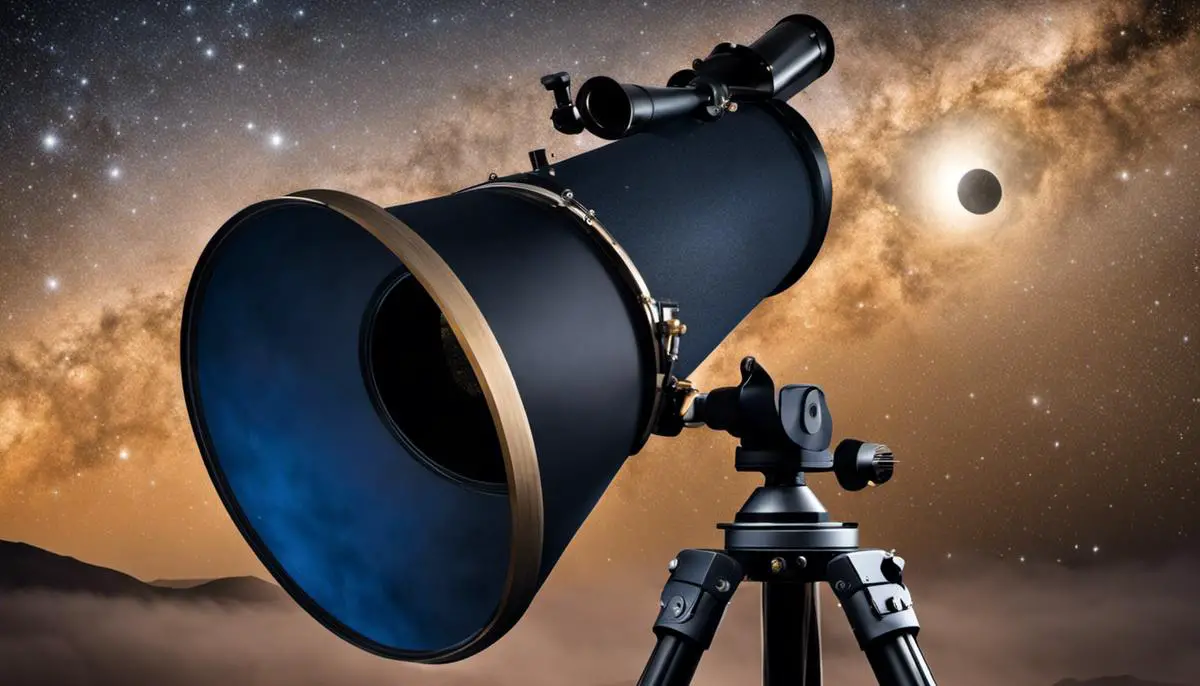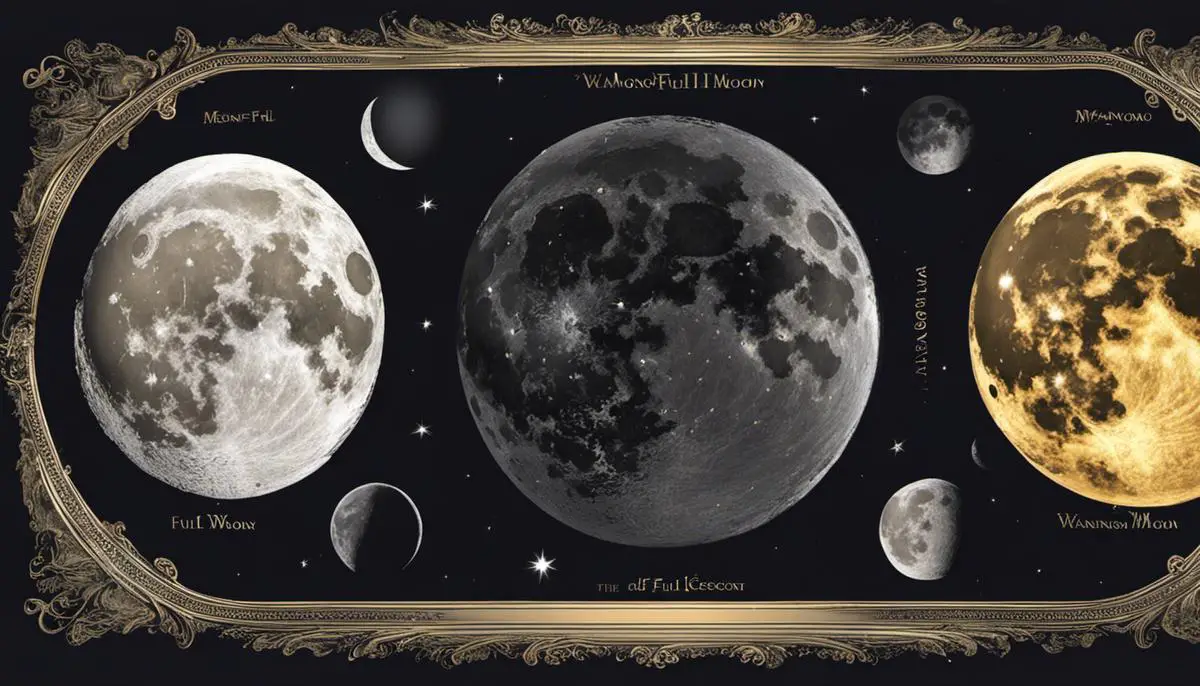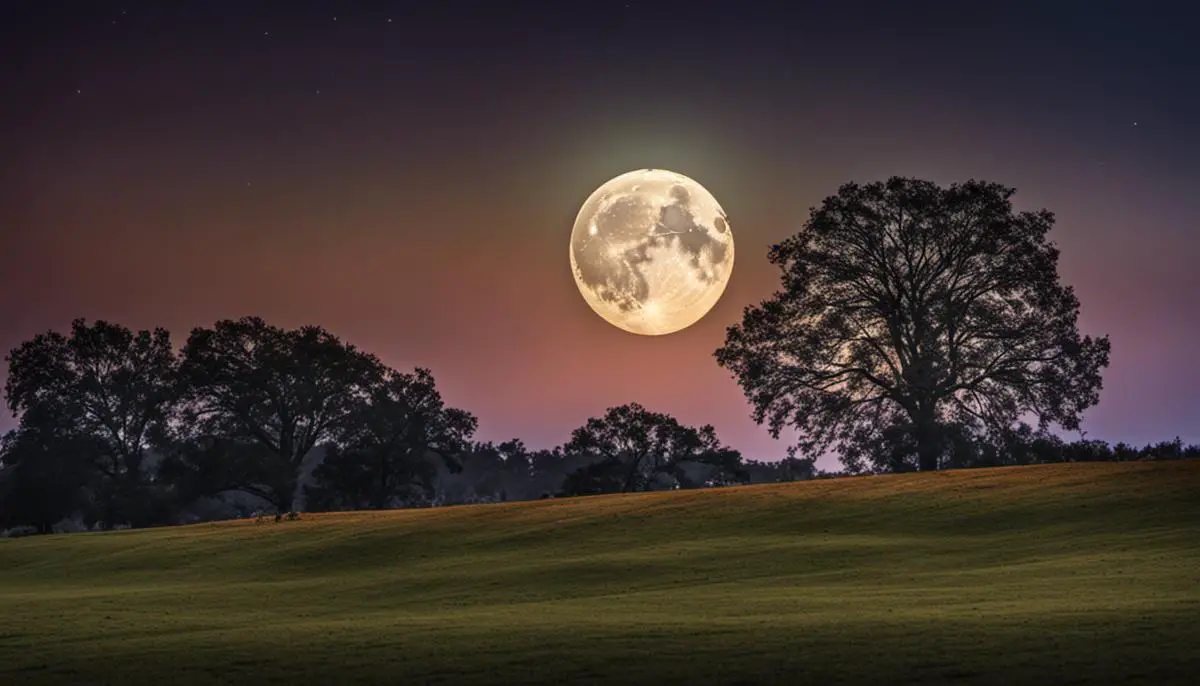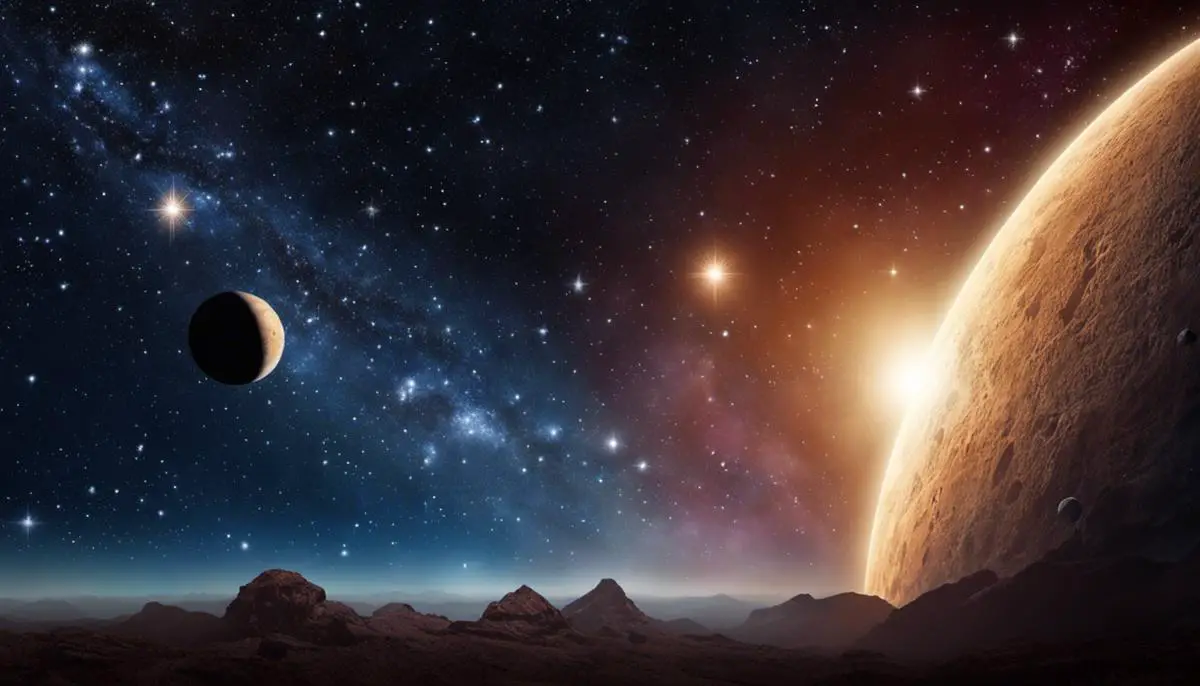A world beyond our own, a captivating spectacle that dots our night sky and fuels the curiosity of humankind – the celestial universe. This expanse has been our companion through the ages, whispering tales of wonder through its cosmic display. Our quest to understand the celestial ballet led to the birth of astronomy, a field that allows us to decode the secrets of the universe. This journey through the cosmos imparts more than just knowledge – it inspires us, connects us to our roots, and reminds us of our place in the grand scheme of existence. One celestial phenomenon standing at the heart of this eternal bond between humans and the cosmos is our very own moon. As we delve into the understanding of astronomy, the phases of the moon, the phenomenon of the full moon, and the intriguing tradition of the full moon buck moon, we explore layers of unearthed knowledge, cultural significance, and age-old myths guarding the mysteries of the universe.
Understanding Astronomy
Understanding Astronomy: The Study of the Celestial Universe
Astronomy is a scientific field dedicated to the exploration and understanding of the celestial universe. The term ‘astronomy’ comes from the Greek words ‘astron’, meaning ‘star’, and ‘nomos’, meaning ‘law’, signifying the study of heavenly bodies according to the laws that govern them. This discipline is as old as human civilization itself, with early records dating back to ancient Mesopotamia and Egypt.
Over time, this field has significantly advanced, enabling humans to comprehend the world beyond our Earth. The developments in technology, from the invention of telescopes to the contemporary space probes, have broadened our scope and understanding of the universe far beyond our ancestors could imagine.
Deepening our understanding of astronomy benefits our daily lives in various ways. Essentially, the study of stars, galaxies, black holes, and other celestial bodies helps to maintain and advance technologies like satellite communication, GPS tracking, and weather forecasting. Moreover, astronomy’s essential role in understanding the cosmic phenomena and potential threats like asteroid and comet collisions promotes the survival and future of humanity.
Exploring Celestial Bodies: Stars, Planets, Asteroids, Comets, and Moons
In terms of celestial bodies, the universe contains a mind-boggling number. These include stars, which are luminous spheres of plasma mostly composed of hydrogen and helium. Our own Sun is a relatively average-sized star. Beyond stars, you have planets, celestial bodies orbiting a star, which are not undergoing nuclear fusion and have cleared their neighboring region of planetesimals.
Most planets have smaller bodies orbiting them known as moons. Interestingly, moons come in a variety of sizes and compositions, from rocky terrains to icy landscapes. These moons can be as geologically fascinating as the planets they orbit.
Additionally, asteroids and comets are also important astronomical bodies. While asteroids are rocky, metallic objects that orbit the sun but are too small to be considered planets, comets are icy bodies that originate from the most distant regions of our solar system, and when they approach the Sun, they start to evaporate and create a glowing coma, or atmosphere, and often a tail.
Experiencing the Universe: A Look at the Full Moon Buck Moon
Of the various features that populate our solar system, moons hold a central place in our understanding and exploration. One of the fascinating aspects of this celestial body involves the intricate process of lunar cycles. These give rise to the varied phases of the moon that we witness from our planet, evolving from the new moon to the full moon.
Announcing its presence in July, the ‘Buck Moon’ is a full moon of historical significance. This term was coined by Native American tribes in North America, drawing its naming inspiration from the buck deer that begin to grow their fresh new antlers around the same time. This July full moon also goes by the moniker of ‘Thunder Moon’, alluding to the frequency of thunderstorms experienced in this month.
Observing the full Buck Moon, much like experiencing other celestial events, provides us with a moment to reflect on the majesty of our universe and our established place within it. When looked at from the angle of science, gaining knowledge about lunar cycles can expand our understanding of the moon’s role in influencing Earth’s tides and its potential seismic impacts.
Astronomy weaves a wondrous tapestry of celestial entities and phenomena, one of them being the full Buck Moon. This science provides a captivating view into the universe’s operations, stirring a balance of curiosity and wonder.

Decoding the Phases of the Moon
Deciphering Lunar Phases
When it comes to lunar phases, they are a mirroring act of the Moon’s revolution around the Earth and the Earth’s orbit around the Sun. Known as a lunar month, this cycle, which encapsulates the Moon’s full orbit around the Earth, is approximately 29.5 days long. Within this period, the moon transitions through various distinct phases, illuminating different parts of itself to us.
New Moon to Waxing Crescent
The cycle begins with a new moon phase, when the Moon is located between Earth and the Sun. The Moon’s dark side is facing Earth, which means it is not visible. As the Moon moves in its orbit, a slim, crescent-shaped piece of the Moon becomes illuminated. This phase is known as the waxing crescent.
First Quarter
The first quarter phase occurs when the Moon is one quarter of its way around the Earth, approximately one week after the new moon. The Moon appears as a half-illuminated disc at this stage, with the right half visible from Earth due to the angle of illumination from the Sun.
Waxing Gibbous
As the moon continues its journey, over half of its face or disk becomes lit by the Sun. This stage is known as the waxing gibbous phase. During this time, the amount of illumination continues to increase, but it is not yet a full moon.
Full Moon
Approximately two weeks into its orbit, the Moon reaches the full moon phase. During this phase, the Moon and the Sun are on opposite sides of the Earth. The entire disc of the Moon is illuminated and it appears as a full circular disc in the night sky.
Waning Gibbous to Third Quarter
After the full moon, the Moon begins to move into the waning gibbous phase. During this phase, only the left portion of the moon remains illuminated. This continues until the Moon has reached three quarters of its way around the Earth, signified by the third quarter phase. During this phase, only the left side of the moon is visible as a half disc.
Waning Crescent
Finally, as the Moon completes its orbit around the Earth, it enters the waning crescent phase. During this phase, only a slim, crescent-shaped portion of the left side of the Moon remains visible until it transitions back to a new moon.
Significance of Full Moon
Each full moon of the year has a specific name. The Full Buck Moon, for instance, occurs in July when a buck’s new antlers are fully grown. These names were historically used by Native American tribes to track the seasons.
Impact on Earth
Understanding these phases of the moon plays a crucial role in astronomy and has a significant impact on life on Earth. The gravitational pull between the Earth and the Moon is responsible for the ocean tides. Besides, the changes in moonlight during different lunar phases also affect the behavior of certain animals and insects.
Significance of Lunar Phases in Various Cultures and Religions
The various stages of the moon, known as lunar phases, play an essential role in numerous cultural and religious customs around the world. Being able to predict these phases facilitates the forecasting of eclipses, and they also feature prominently in certain astrological practices.

The Full Moon
The Full Moon Phase Explained
Commonly recognized for its breathtaking brilliance, the full moon phase occurs approximately once every 29.5 days. This phase begins when the moon positions itself directly opposite the Earth from the Sun. This specific alignment allows the Sun’s rays to fully illuminate the side of the moon facing the Earth. As both the Earth and moon continue their respective orbits, the alteration in the angle between the Earth, the moon, and the Sun creates the visible phases of the moon.
The Science and Significance of a Full Moon
Astronomically, a full moon provides the best opportunity to observe the moon’s surface due to the sunlight fully illuminating it. Because the sun is shining directly on the moon, the lunar surface details such as its highlands, valleys, and craters become easily visible.
Historically and culturally, the full moon has often been tied to mythologies and folklore. Many ancient civilizations structured their calendars around the lunar cycle and attributed spiritual or mystical significance to the full moon phase. In some cultures, full moons were believed to affect human behavior and were often associated with insomnia, madness, and the transformation of humans into werewolves.
Exploring Full Moon Names: The Buck Moon
Ever wonder why each full moon of the year has its own specific name? These designations are deeply rooted in the culture and region from which they were derived, often reflecting changes in the environment that correlate with the lunar cycle. Take, for example, the July “Buck Moon”.
Referred to as the “Buck Moon” by Native American tribes, the July full moon is named in recognition of the period when male deer, or bucks, begin to regrow their antlers. This illustrates how full moons serve as not only unique celestial events, but also mark the rhythms of wildlife and nature.
The Buck Moon has other names too. Referred to as Midsummer Nights in recognition of the summer season, some tribes also hail it as the Thunder Moon, to signify July’s thunderstorm season. The full moon’s effects on Earth’s wildlife and tides, and potentially on human behavior, make these lunar events a rich point of reference for astronomical, cultural, and behavioral research.

The Full Moon Buck Moon
Diving Deeper: The Phenomenon of a Full Moon
But what does it mean for a moon to be ‘full’? A full moon is a phase in the lunar cycle where the moon appears fully illuminated from Earth. This happens when the Moon, Earth and Sun align, with the Moon positioned opposite the Sun and Earth neatly nestled between them. As the Sun’s rays bounce off the Moon’s surface, the result is a brightly illuminated moon visible from Earth. Thanks to their celestial positions, a full moon is characterized by high visibility throughout the night, treating us to a glowing spectacle in the night sky.
July’s Full Moon: The Buck Moon
The full moon that occurs in July is traditionally known as the ‘Buck Moon.’ The name originates from a practice of early Native American tribes, who named each moon to keep track of the seasons. The ‘Buck’ moon got its moniker as male bucks typically begin to grow new antlers in this month. The buck moon is also sometimes referred to as the ‘Thunder Moon’ due to the frequent thunderstorms in July.
Astronomical Significance of the Buck Moon
In astronomic terms, the Buck Moon holds no distinctive significance apart from marking a new lunar phase in July. Like other full moons, the Buck Moon provides an opportune moment for astronomers and amateur stargazers to observe the lunar surface owing to its full illumination. It may also slightly affect tidal waves on Earth due to an increase in gravitational pull.
Folklore and Traditions Surrounding the Buck Moon
The Buck Moon has been entrenched in a myriad of myths and cultural traditions among different societies. For instance, some Native American tribes believed that each full moon carried specific spiritual and symbolic meanings. For them, the Buck Moon was a sign of abundance and growth, symbolizing the maturing of young bucks.
In various cultures worldwide, full moons, including the Buck Moon, are considered times of celebration, transformation, or even fear. For example, farmers once used the light of the full moon to aid in their nighttime tasks – a practice that lead to the term ‘moon farming.’
The Buck Moon also has lore associated with it in popular culture. These can range from superstitions about increased irrational behavior or sleep disturbances during a full moon to romantic or poetic notions celebrating the moon’s beauty.
Note that while these folkloric tales and superstitions are intriguing, there is no scientific evidence supporting these full moon phenomena. The full moon’s prominent visibility and traditional timing mechanisms are likely behind much of the folklore and myths associated with the Buck Moon.
However, the cultural significance and historical associations of the Buck Moon make it a fascinating subject in the realms of folklore, myth-making, and traditional astronomy.
Observing the Buck Moon
The Buck Moon is just as observable as any full moon. It appears at sunset and remains visible until sunrise. Unlike eclipses or meteor showers, you don’t need any special equipment to view a full moon. For a closer look at the lunar craters and seas, a basic pair of binoculars can greatly enhance your viewing experience.
Be mindful of the weather and the moonrise time in your location for the best viewing experience. Every year, it continues to be a yearly ritual for moon gazers to flock in open fields, away from city lights, to behold the majestic sight of the full buck moon, silent and regal in the night sky.

As different civilizations stared up at the sky, pondering their existence, they almost invariably centered their inquiries around the wax and wane of the moon. More than a celestial body, the moon became a symbol, a calendar, an oracle framing our history and culture. The culmination of this lunar reverence is seen in the full moon phase, celebrated and feared across cultures. The full moon buck moon, occurring traditionally in July, carries with it an array of traditions and beliefs, captivating with its unique charm. Our journeys in understanding astronomy, the phases of the moon, the full moon, and the full moon buck moon illuminates not just the path of scientific discovery, but also the rich tapestry of human culture intertwined with celestial movements. As we continue to look upwards and navigate our universe, these celestial guides remind us of our past, inspire our present, and beckon us towards a future of further exploration, discoveries, and a continual dance with the cosmos.
![]()
